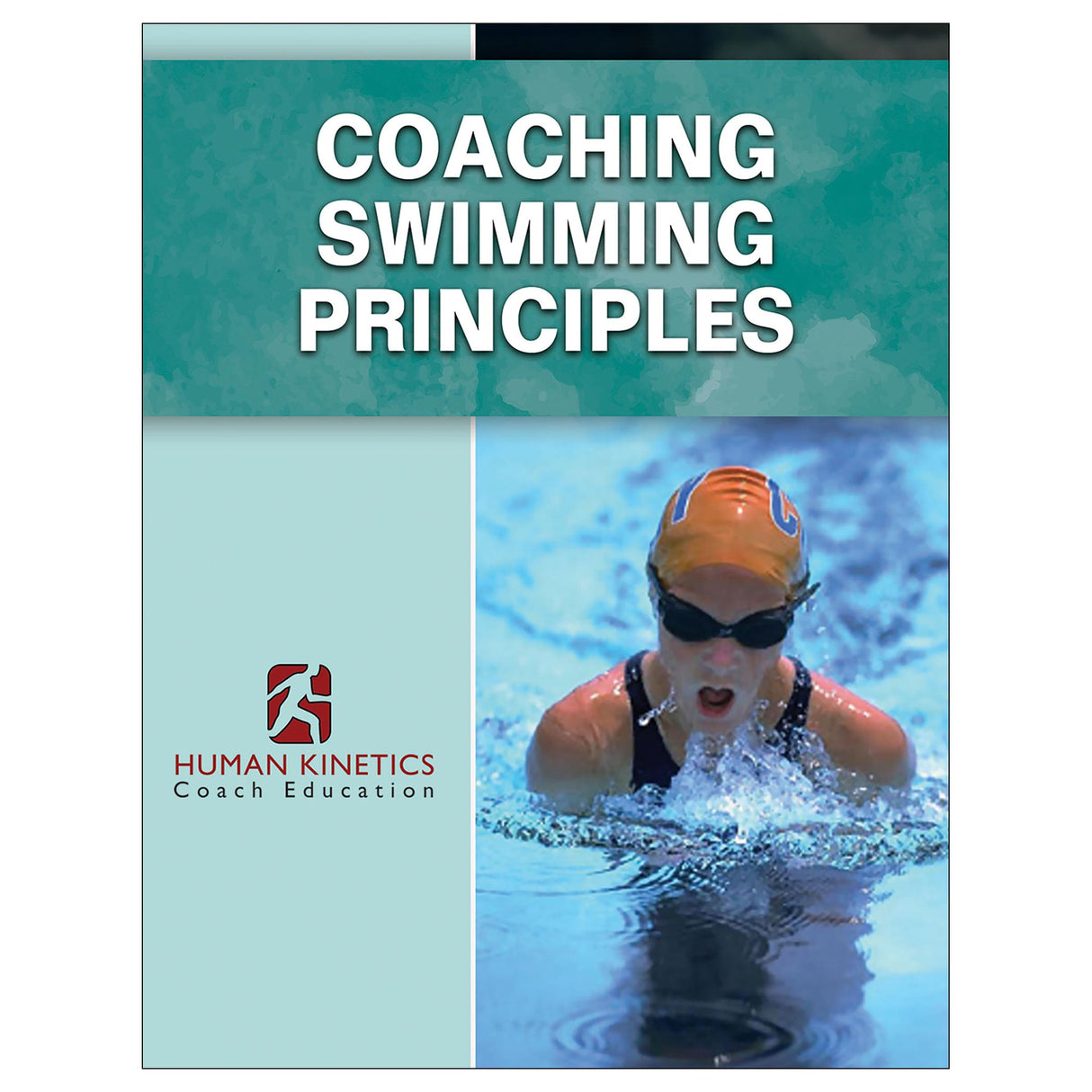Online Course
Coaching Swimming Principles Online Course
Author: Coach Education
$49.95
Unit price
/
Unavailable
Online Course
$49.95 USD
$49.95 USD
Online Course
This package includes the following:
After completing the course units, you’ll take the 50-question test online. Upon successfully passing the test, you will be entered in the National Coaches Registry, an online listing of coaches who've completed Human Kinetics Coach Education courses. Sport administrators have access to the registry, allowing them to track coaches' course completion.
Learning Objectives
After completing this course, you will be able to do the following:
- Coaching Swimming Successfully, Second Edition, ebook
- Online Coaching Aids documents (PDFs)
- Online test
After completing the course units, you’ll take the 50-question test online. Upon successfully passing the test, you will be entered in the National Coaches Registry, an online listing of coaches who've completed Human Kinetics Coach Education courses. Sport administrators have access to the registry, allowing them to track coaches' course completion.
Learning Objectives
After completing this course, you will be able to do the following:
- Explain approaches for generating support for the swimming program by your athletes, the school administration, other coaches, and parents
- Explain the difference between technical and tactical skills
- Explain the elements of the tactical triangle
- Implement a coaching strategy that addresses different kinds of skills (technical and tactical, communication, character, mental, physical)
- Differentiate between the traditional and games approaches to swimming instruction
- Recognize opportunities to shape, focus, and enhance skills through practice activities (games approach)
- List the criteria coaches should use in making preseason evaluations
- Describe the basis for evaluation of swimmers
- Explain how swimmers should be observed in practices and at meets
- Identify the main reasons for keeping written practice records
- Explain the purpose of formal and informal evaluation of your players’ performance
- Use evaluation tools, including videotaping, to evaluate swimming skills
- Employ consistent, positive, and effective feedback when critiquing your athletes
- Identify the three factors that contribute to speed in swimming
- Employ the minimum-number drill with your swimmers
- Explain the purpose of teaching swimmers to scull and using sculling drills in practices
- Explain why the acronym KISS is important in teaching
- Teach your swimmers the streamlined torpedo position
- Explain when the dolphin kick is used, how swimmers should generate power when performing it, and drills used in teaching it
- Teach your swimmers optimal hand and arm position for the stroke
- Explain why trunk rotation is important and where in the body it should be initiated
- Identify the four drills used in teaching proper kicking technique for the crawl
- Describe how swimmers should breathe when performing the crawl
- Identify the three Rs for success in the backstroke and the purpose of each
- List the two kicks necessary for backstroke success
- Identify the characteristics common to both the crawl and the backstroke
- Explain why the breaststroke is unique among all the competitive strokes
- Identify the main objective in teaching the breaststroke, its technical characteristics, and the steps for teaching it in the proper sequence
- Describe the distinguishing characteristics of the front-end butterfly stroke and the most important practice goals for it
- Explain the four segments of the two-season yearly plan
- Identify the foundation for and the most important objective of a season plan for swimmers
- Understand the USA Swimming training categories and terminology for the training systems
- List the equipment needed at swim practices
- Identify strategies for long-course training when only a short-course pool is available
- Describe how to assign swimmers to lanes in practices
- Identify the training aids discussed in Coaching Swimming Successfully and explain their purpose
- List two strategies for injecting fun into practices.
- Identify the three factors that would make a regular-season swim meet more important than normal for a coach to focus on
- Explain the three Rs in peak preparation
- List the eight factors that coaches should consider before deciding on the length of the peak preparation period
- List the two statistics that should be recorded by the coach or student manager throughout a meet
- Describe the method and purpose of a postrace cool-down
- Explain how and why the timing of the post-meet team meeting varies
Audience
High school coaches, serious club coaches, college and university undergraduate students, and advanced coaches at the youth level. Teaching Sport Skills
Evaluating Technical and Tactical Skills
Coaching Stroke Technique
Dolphin or Butterfly Kick
Crawl Stroke
Backstroke
Breaststroke
Butterfly
Season Plans
Practice Plans
Before the Competition
During and After the Competition
Practicum Exercises
Evaluating Technical and Tactical Skills
Coaching Stroke Technique
Dolphin or Butterfly Kick
Crawl Stroke
Backstroke
Breaststroke
Butterfly
Season Plans
Practice Plans
Before the Competition
During and After the Competition
Practicum Exercises



